Contents
Dahlias are one of the most beautiful and unpretentious perennials. Previously, it was impossible to imagine a personal plot without these flowers, they grew everywhere and invariably served as a source of pride for the hostess. But fashion passes, the dahlia is somewhat forgotten, however, recently it has again settled in our gardens. Perhaps this is due to the fact that a variety of bulbous, tuberous, root-tuberous flowers flowed to us from Holland. Among them there are dahlias of such beauty that it is simply impossible to take your eyes off, and with different size and shape of the flower, and their color is so diverse that it is difficult to say which color is missing in their palette. In addition, there is now a real boom in container garden flowers, and it is unlikely that it will decline soon. And the Dutch breeders once again pleased us with excellent new low-growing varieties.
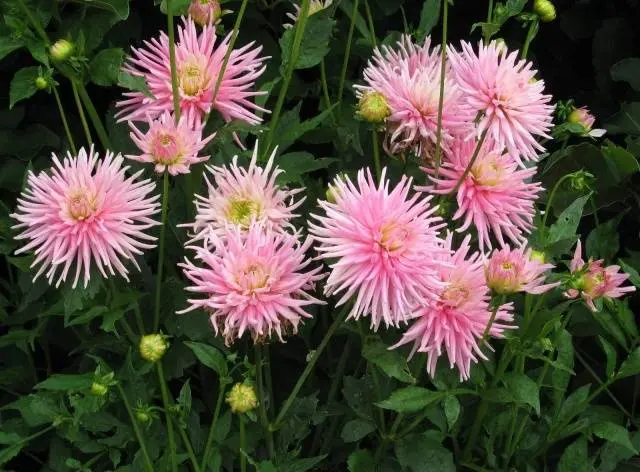
Spring has come, we are increasingly thinking about what to plant in the flower beds. Many have already taken dahlias out of the cellars and placed them for germination. We talked in detail about how to do this in one of the articles and we hope that you have no problems. Planting dahlias with tubers in the spring is also not particularly difficult.
A little about dahlias
Did you know that the dahlia came to Europe as an edible, not an ornamental plant? Only now the capricious Europeans did not appreciate its taste, but they quite liked the flowers, they began to grow them in front gardens. Then breeders took up the dahlia. As a result, we have more than 15000 varieties, the number of which is increasing every year.
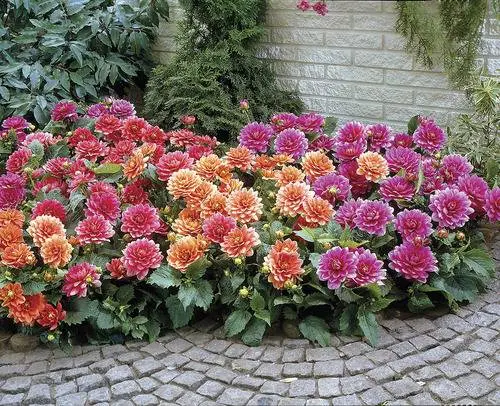
The root system of dahlias is root cones or root tubers, which are a thickened, modified root, and not a stem, which is a tuber. A flower and not a flower at all, but a complex inflorescence – a basket consisting of many marginal reed flowers and internal tubular ones. The trunk of a dahlia is hollow, but very strong. With the current varietal diversity, the growth of this flower can vary from 20 to 150 cm or more, and the diameter of the inflorescence is from 3 to 25 cm.
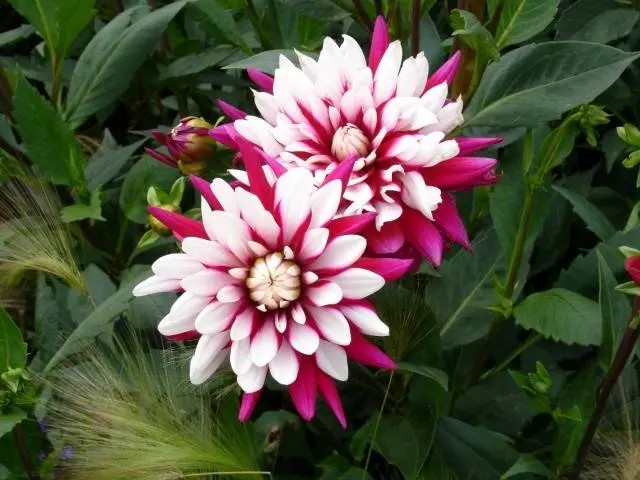
Dahlias are flowers with an annual cycle of development and a pronounced dormant period. Starting from spring, they grow, bloom, after the first frosts, their vegetative mass dies off, and the tubers go to rest. A few months later, they wake up after winter, in the spring the root neck releases the first shoots and everything starts all over again. It should be noted that dahlias are very thermophilic and do not winter on the street.
Preparing dahlias for planting
In one of the previous articles on our website, we described in detail the germination of dahlias in the spring, but let’s repeat the main stages of this process.
We get root tubers from storage
We will assume that our tubers were stored correctly, and wintering was successful. The timing of when to get dahlias from storage in the spring is different for each region. This should be done about 2-3 weeks before landing in the ground. Usually for central Our Country this is mid-April. If you plan to propagate flowers from cuttings, do so at least a month in advance. It is impossible to get the tubers out of the basement in the spring and immediately bring them into a warm room, due to a sharp temperature drop, you can simply lose the plant.
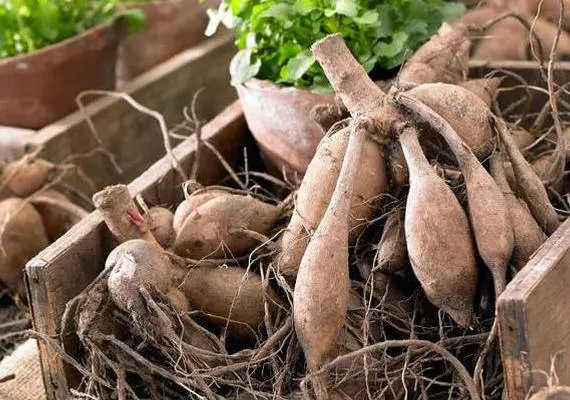
Only after that, dahlias can be brought home.
Preparation and disinfection before germination
Any preparation of dahlias for planting begins with the disinfection of tubers. If after digging you have not washed them from the soil, it’s time to do it in the spring. Carefully inspect the washed tubers for possible rotting, mold and infections. Remove all affected parts with a sharp sterile knife and soak the tubers in a pre-prepared slightly pink solution of potassium permanganate for 30 minutes. Then sprinkle all sections with crushed activated charcoal and leave for a day to dry.
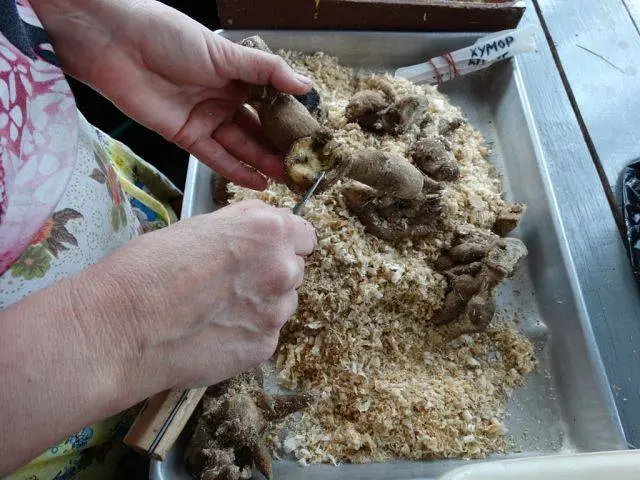
Germination of the dahlias
Germination of dahlia tubers in spring can occur in any loose substrate:
- sawdust;
- loose earth;
- sand;
- try;
- peat.
Sprinkle a little moist substrate on the bottom of the boxes and carefully place the tuber nests on top. Most importantly, the root neck should be directed upwards, it is on it that the growth buds are located. Lightly sprinkle the tubers with soil and place in a bright place with a temperature of about 20 degrees. When the first shoots appear, lower the temperature to 15-16 degrees.

If you have few nodules, you can germinate them in pots without deepening the root neck too much.
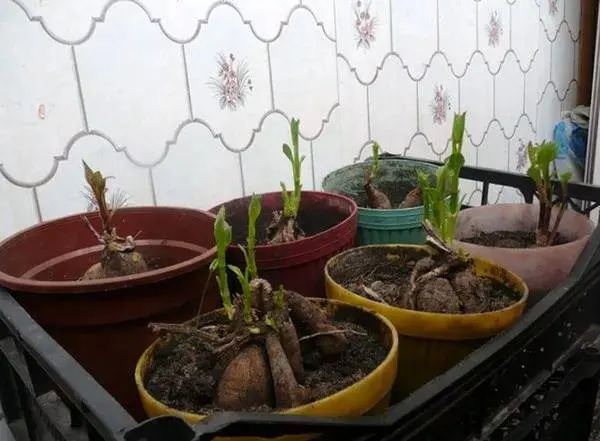
Tuber division
It is not necessary to divide dahlia tubers every spring. But if you neglect this procedure for 3-4 years and plant only large overgrown nests in the ground, the flowers will gradually degenerate. The absence of spring division of dahlias is fraught not only with the fact that you miss a rotten tuber, which, after planting, will provoke decay of the entire root system, but also with the appearance of small few flowers.
When the first sprouts appeared or just the growth buds swelled well, it was time to divide the tubers. This must be done on time, not allowing the shoots to become large – so there is a danger that during the division we will simply break them off, because in the spring, at the initial stages of growth, they are very fragile.

We invite you to watch a video in which an experienced gardener talks about dividing dahlia tubers:
After you have separated the tubers and dried the sections, return them to the sprouting boxes.
Dahlia cuttings
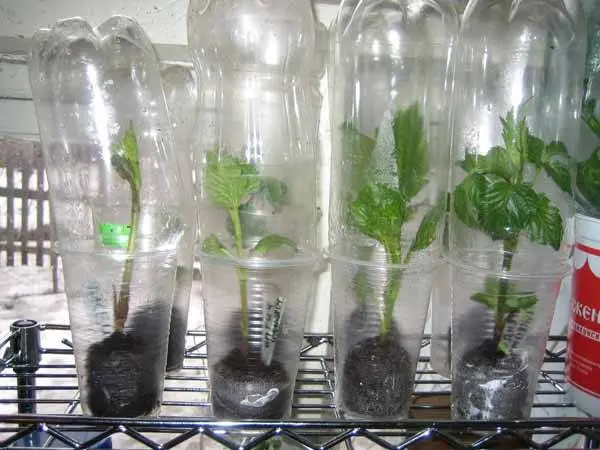
Planting dahlias in the spring is carried out not only by tubers. This plant is easy to propagate from cuttings. When the young shoots reach a height of 6-10 cm, they are carefully broken out with a “heel” or cut out with a sharp sterile knife with a piece of the root neck and planted in separate pots or peat tablets.
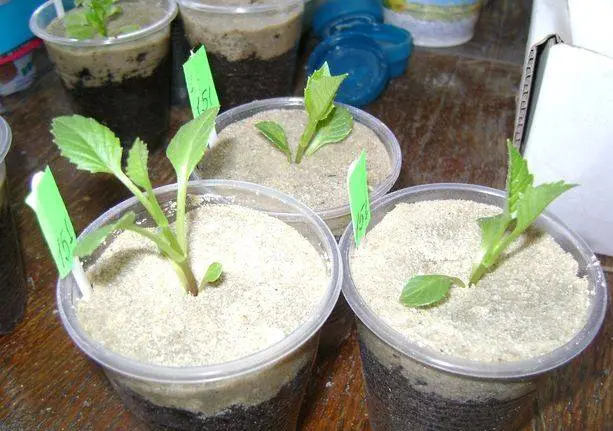
This is how the rejuvenation of planting material occurs.
Germination care for dahlias
In the spring, during germination, one should not get carried away with watering – the tubers have a sufficient supply of moisture and nutrients for the first time. Here it is better to dry the soil a little than to over-moisten it. It is better to carefully spray the seedlings with a spray bottle.
After you have divided the dahlia tubers, you will have to make sure that too many shoots do not appear on each division. It’s not a pity, leave 2-3 of the strongest, and break out the rest.
Planting dahlias in open ground
We told how to prepare dahlias for planting. Believe me, this is not a difficult matter, you just need to get used to it a little and find a suitable place for germination, because if there are a lot of tubers, then they need a lot of space, and even well-lit. Now it’s the turn to describe how to plant dahlias in the spring.
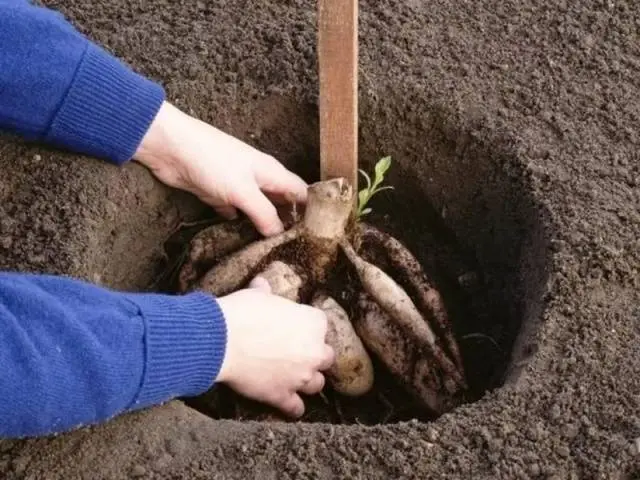
Choosing a landing place
Dahlias need a lot of sun, a place protected from strong winds, and loose, moderately fertile soils. These flowers are surprisingly unpretentious to the soil, you can not plant dahlias only in a wetland – there their tubers will simply rot.
Landing site preparation
It is best to prepare a place for planting flowers in the fall by digging a bed on a shovel bayonet. Although dahlias can be grown in any soil, it is better not to create extreme conditions. Add lime or dolomite flour to too acidic soil, and acid (moor) peat to alkaline soil. If your soil is poor, add mature compost or well-rotted humus.
In the spring, the soil is dug up again.
Planting dahlias in the ground
The time when to plant dahlias in open ground in spring is different in each region. It must be remembered that these flowers are very thermophilic and even a short-term decrease in temperature will cause their death.
In the spring, we plant dahlias in the flower beds, not only when the threat of return frosts has passed, but also when the earth warms up well. The hole needs to be dug approximately on the bayonet of a shovel, add a matchbox of superphosphate, mix well with the soil. If the soil is poor in nutrients, we additionally add well-rotted humus or a complete complex fertilizer, for example, amophoska. In excessively dense soil, add peat or sand.
With dense soils, we will arrange drainage – we will pour a shovel of fine gravel or brick chips on the bottom of the landing hole.
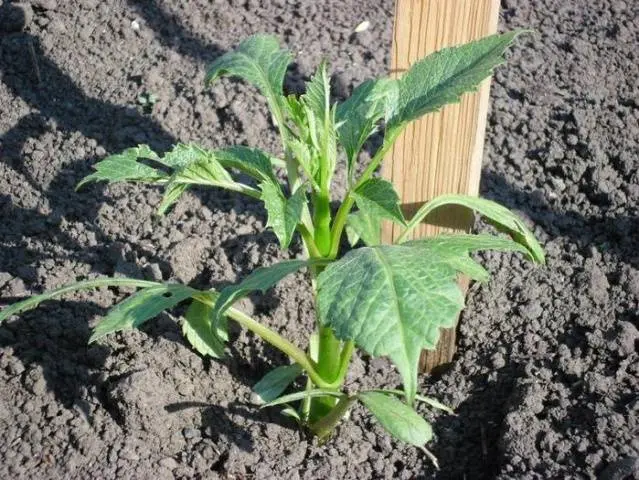
Attention! If your soil is light and loose in itself, do not do additional drainage, otherwise the dahlias will have to be watered every day!
Place the tubers in the planting hole, cover with soil so that the root collar is about 2-3 centimeters deep.
In the spring, before planting tall varieties, be sure to set up a support for them, you risk damaging the tubers if you do this later. After the plant is planted, water it generously.
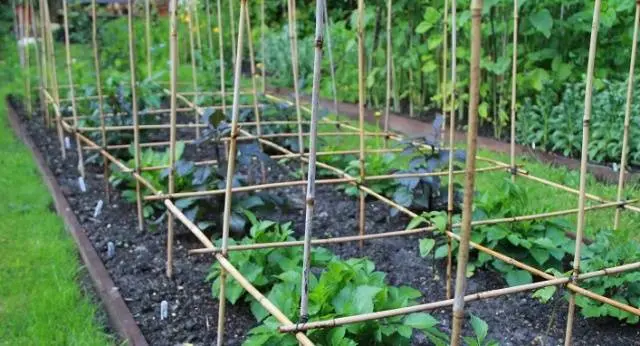
Planting dahlias in containers
Planting low-growing varieties of dahlias in containers is now very popular. City residents who grow flowers on balconies and loggias can also grow them. It is important to remember one thing – flower pots are only suitable for dahlias grown from seeds. In the spring, a stalk of a low-growing variety can also be planted in a pot, but its volume should not be less than 5 liters.
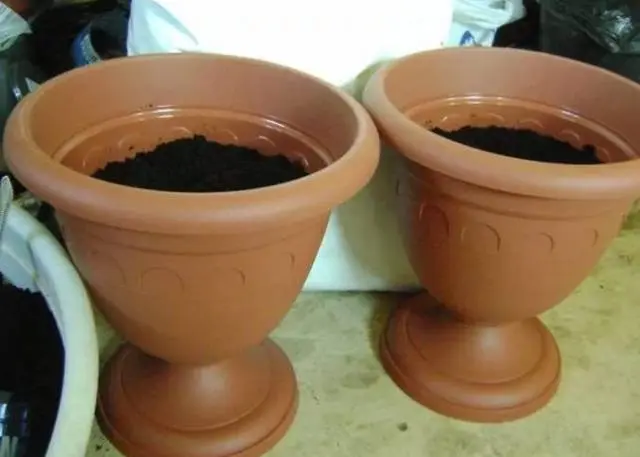
Dahlia tubers are planted either in large ceramic flowerpots or in containers with a volume of at least 15 liters, but this is a minimum, and for the smallest flowers with a small tuber! Usually containers for planting dahlias have a volume of 30-40 liters. Otherwise, the plant will suffer from a lack of soil throughout the season and will give a weak nodule, which will most likely die in winter.
Post disembarkation care
The first time after planting dahlias, they need enhanced watering and protection from the bright sun. You can just cover the plants with newspapers for the first 2-3 days. These flowers do not like loosening, since we do not know where the growth of new tubers will be directed and risk damaging them. It is better to immediately mulch the planting – so the weeds will not grow, and you will have to water less often.
We offer you to watch a short video about the landing of dahlias:
Conclusion
Perhaps the germination and planting of dahlias will seem troublesome to someone. But the plant is unpretentious and does not require much care during flowering. In addition, long and abundant flowering, which you can enjoy until the very frost, will more than pay for all your worries.









